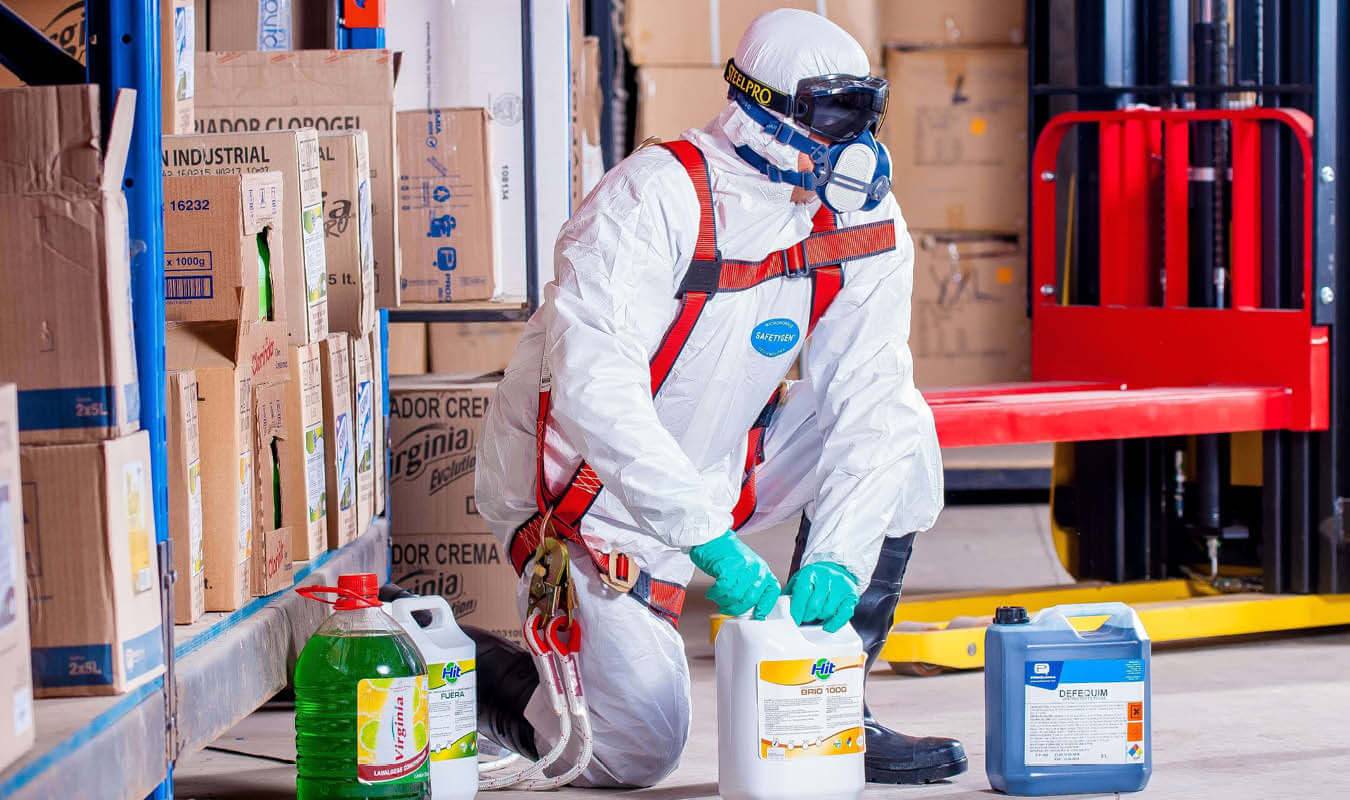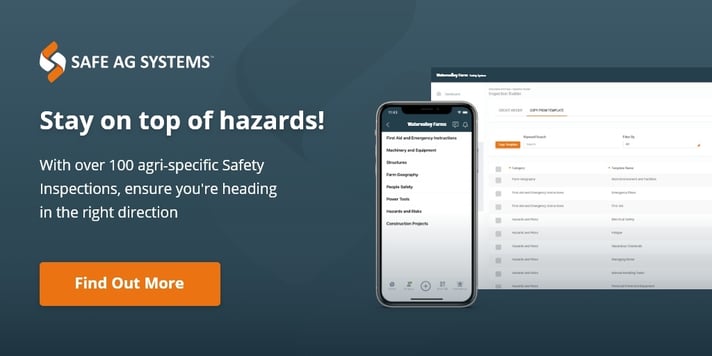Hazardous substances are part of daily life in agriculture, whether it’s grain dust or use of herbicides and pesticides. Sometimes, these substances can be harmful to health, but what is COSHH? Employers are required to assess and control the risks from these, and this is called Control of Substances Hazardous to Health, or COSHH.
COSHH Explained
COSHH covers all kinds of substances which are hazardous to health. This includes:
- substances used directly in work activities e.g. cleaning chemicals, fertilisers, many pesticides and veterinary medications
- substances generated from work such as welding fumes
- naturally occurring substances like grain dust, poultry dust, silo and slurry pit gases
- biological agents like bacteria and fungi
COSHH requires you to take steps to achieve the following, in this order:
-
Eliminating exposure
-
Controlling exposure
-
Monitoring health
Let’s explore what these mean
1. Eliminating exposure
By eliminating exposure, you and your workers are not put at risk by the substance. This is the best possible option. Think about how you work – can you change the way you work so the hazardous substance isn’t used or generated? Maybe you could replace the hazardous substance with a safer option. Or can you use the substance differently or in a different form - for example use wet feed instead of dusty meal.
If you can’t eliminate exposure, you then need to find a way to control it.

2. Controlling exposure
Controlling exposure means finding ways to reduce the risk of a worker being affected by hazardous substances. You still need to use substances, so work out the best ways to keep people safe.
According to www.hse.gov.uk, these include, in order of priority, one or more of the following:
-
ways of working that minimise the amount of substance used or produced;
-
engineering controls, e.g. enclosing the process or fitting local exhaust ventilation to remove toxic fume or dust at source;
-
minimising how long people are exposed, or how many are exposed;
-
good housekeeping to minimise accidental contact;
-
personal protective equipment, such as dust masks, respirators and gloves, but only as a last resort and never as a replacement for other measures;
-
good washing facilities to aid high standards of personal hygiene;
-
training in the use of engineering controls, good practice, and protective equipment.
Remember that engineering controls protect both the operator and other people in the workplace, while personal protective equipment only protects the wearer.
3. Monitoring Health
Even with the best controls in place, you and your workers are still going to be exposed to substances harmful to their health, which could result in problems in the future. Some of the exposures could include:
- dusts that could cause asthma or other respiratory conditions
- substances that could cause skin conditions like dermatitis, e.g. solvents
- sheep dips that contains organophosphorus compounds
Health Surveillance can potentially detect signs of issues early, meaning better options for treatment. A visit to the doctor to do biological checks like taking a blood sample may be necessary. Simple on-farm checks can also be a good idea, such as a supervisor trained in inspecting workers hands for signs of dermatitis, periodically asking questions about breathing difficulties, and monitoring absences from work due to illness. For the last one you may even ask the worker or their doctor if the illness is related to work.
To find more advice on COSHH specific to agricultural topics, check out HSE COSHH essentials.
Topics: Safety Management System
Disclaimer: Content on this website may be of relevance to users outside of United Kingdom, but content links and examples are specific to the UK. Please check with your local authority for your country and industry requirements.











